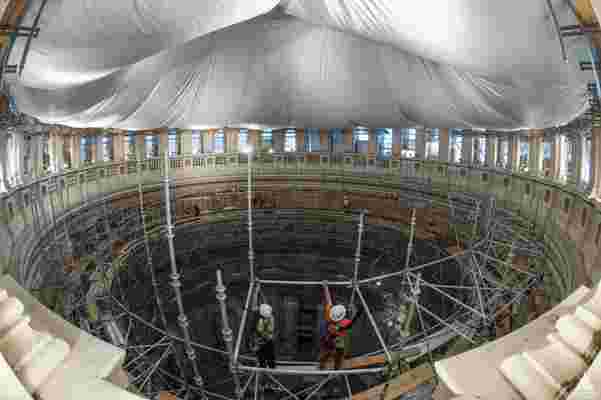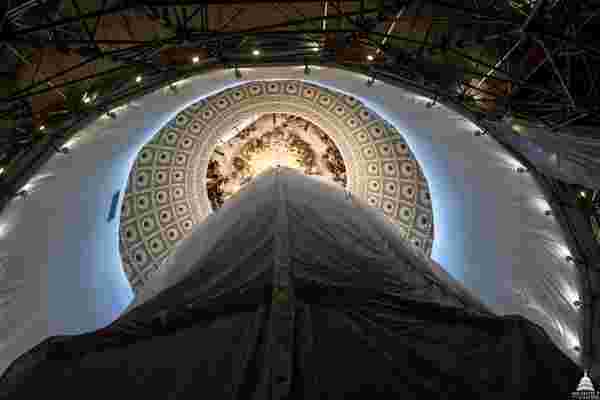See How the U.S. Capitol’s $60 Million Restoration Is Coming Along
While many Americans are anxiously looking toward Election Day on November 8, officials at the Architect of the Capitol—the federal agency charged with maintaining Washington’s congressional compound—have their sights set on another date: January 20, 2017. Not only is it Inauguration Day, when November’s winner will assume the presidency on the hallowed steps of the U.S. Capitol, but it’s also when the landmark’s $60 million restoration is promised to be complete. And now that the 288-foot cast-iron dome has shed its scaffolding, it’s looking like the deadline will, in fact, be met. For the past two years the iconic structure had been obscured by over a million pounds of construction materials, which aided workers in repairing the 1,000-plus cracks that had developed since the last comprehensive update, some 50 years ago. The project’s final phase is now under way to get the building picture-perfect for what is bound to be a historic swearing-in.
For more information visit aoc.gov/dome .

Construction of the U.S. Capitol began in September 1793, after president George Washington laid the cornerstone, and by 1800 the building was officially in use. Philadelphia architect Thomas Walter devised an expansion in the 1850s that included the now-iconic neoclassical dome, which is topped by the 19-foot-tall bronze Statue of Freedom.

The dome’s interior was also refreshed during the project, with doughnut-shaped drapery put in place while work was under way. Not only was lead paint removed and replaced with a less toxic variety, but new lighting was installed, ironwork was restored, and mechanical systems were upgraded.

Drapery was arranged so that the rotunda’s stunning Constantino Brumidi fresco, The Apotheosis of Washington, remained in view.
Five layers of safety netting, weighing approximately 6,100 pounds and measuring 14,700 square feet, were employed.
A project worker repaints the dome—which received three new coats—with the Library of Congress behind him. A total of 1,215 gallons were applied, including a top layer in the “Dome White” hue.
A labor-intensive technique known as lock and stitch was used to repair over 1,000 cracks in the dome’s cast iron.
With the National Mall unfurling in the background, construction workers disassemble part of the 52 miles of scaffold pipe that surrounded the structure.
Two miles of decking snaked around the Capitol while repairs were being made.
A cotton-candy sky bathes the scaffolding-clad landmark in August 2015.
The restored cupola in July, after part of the scaffolding came down.